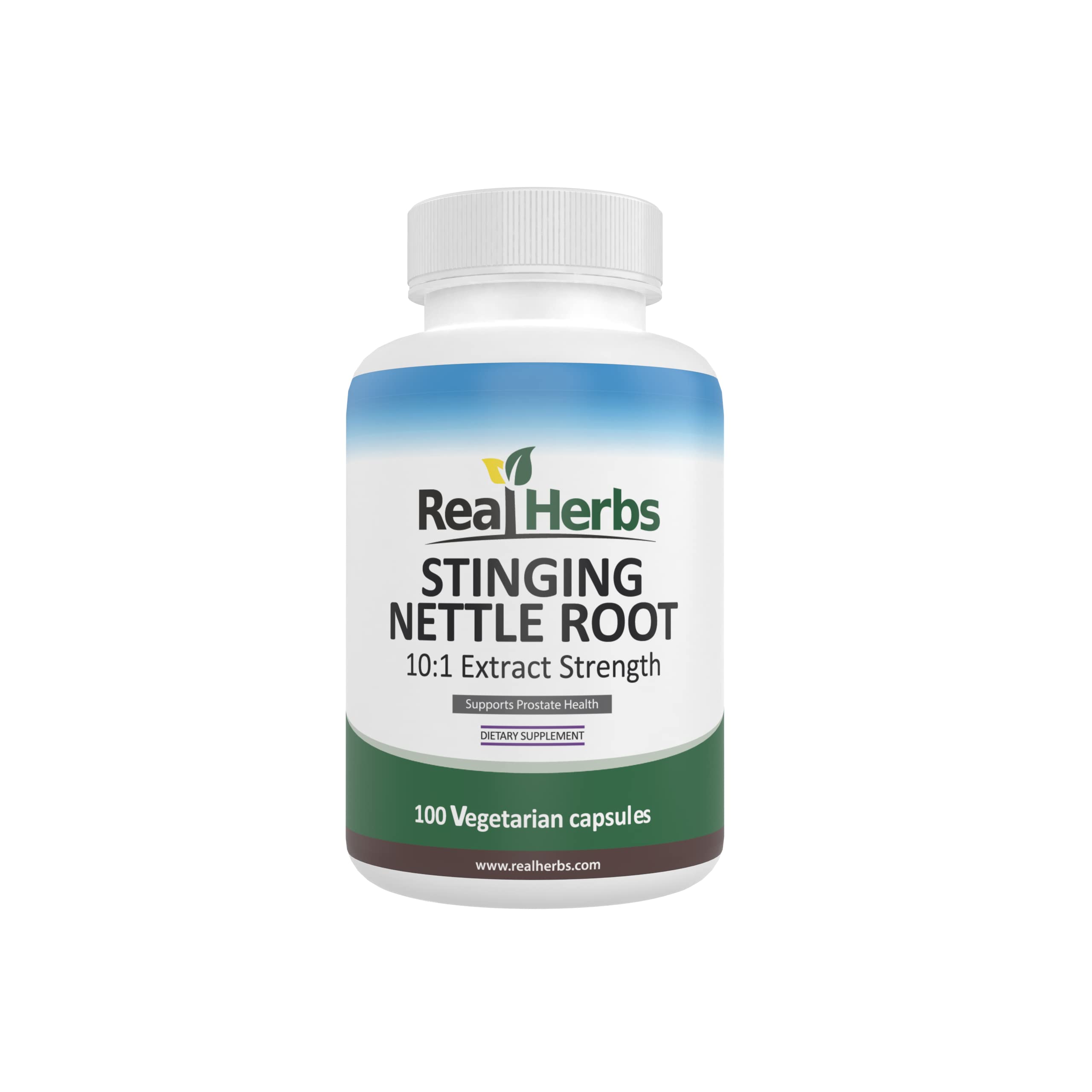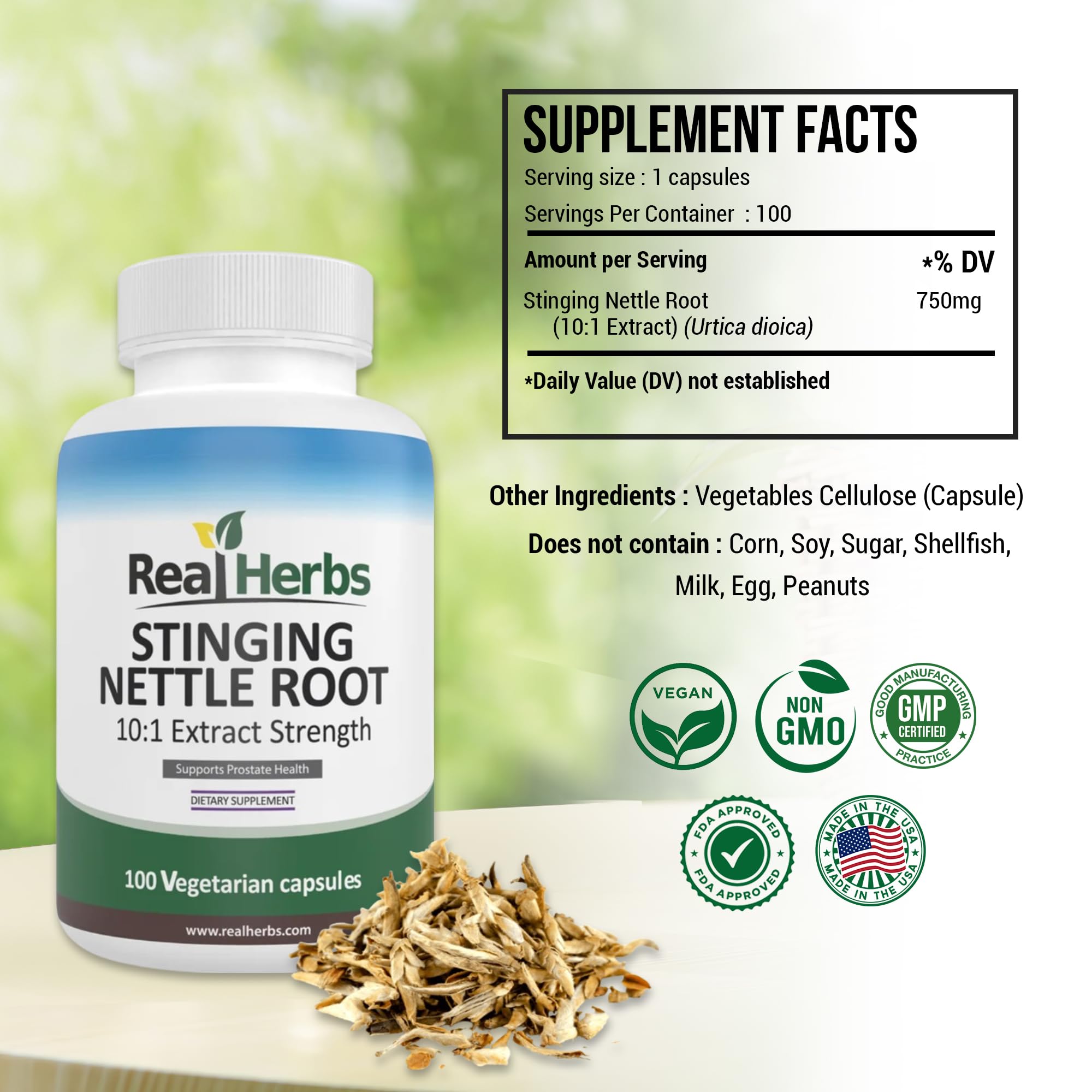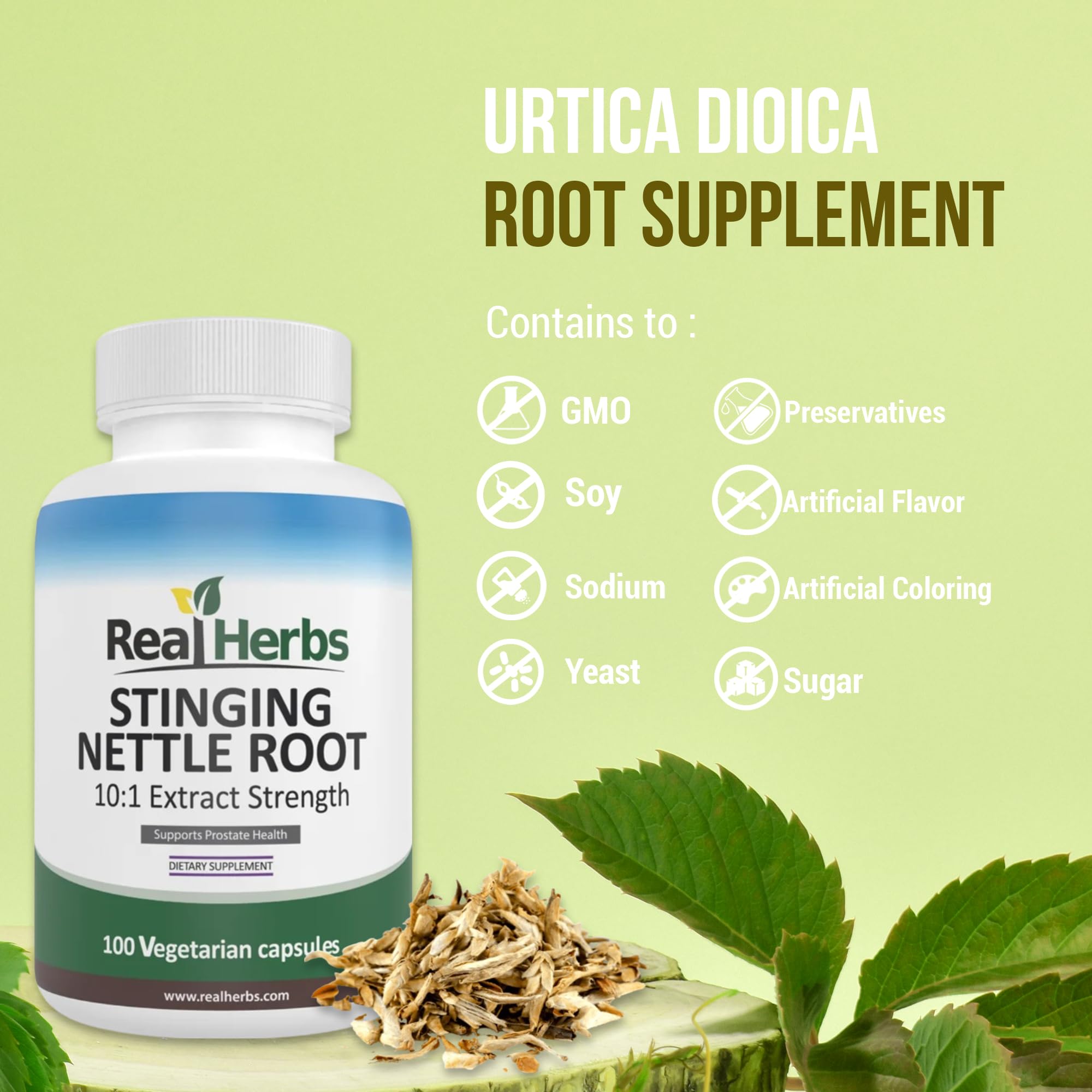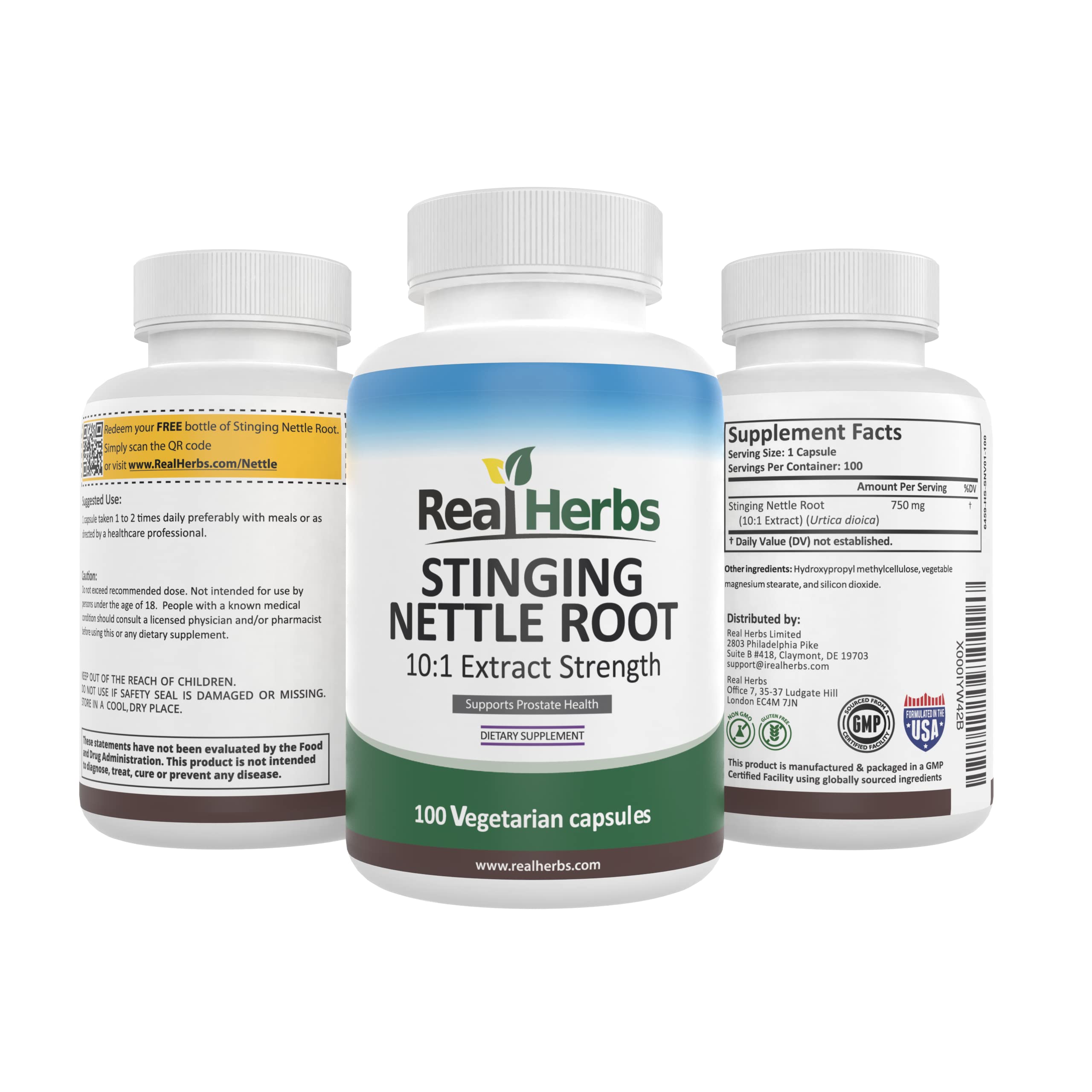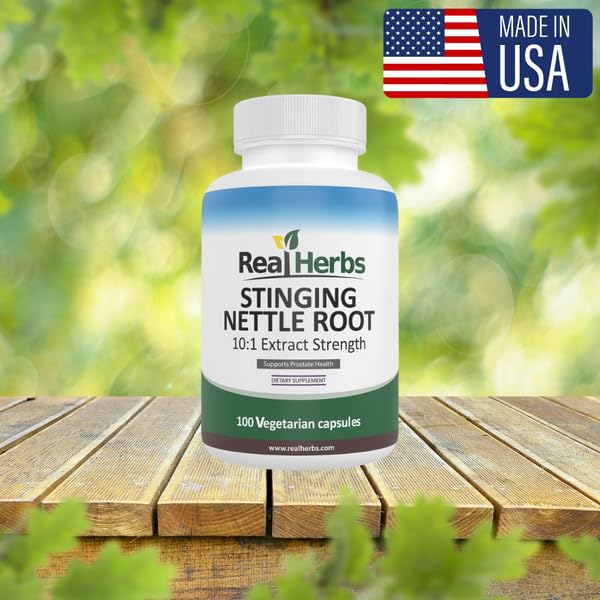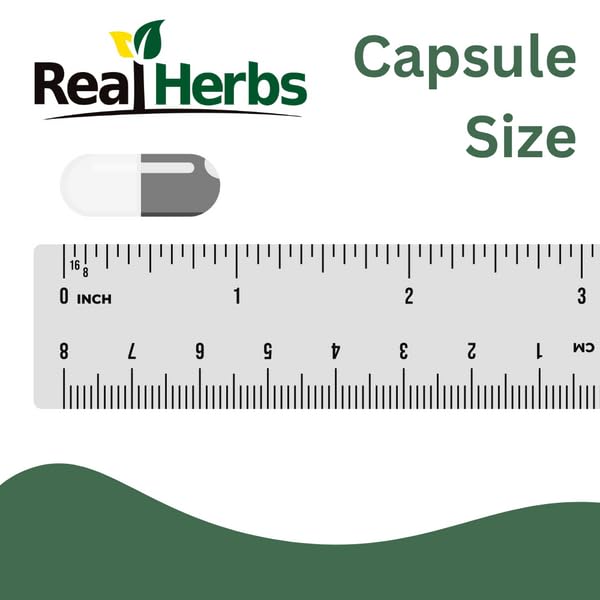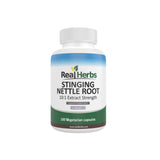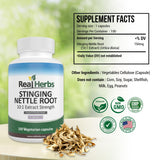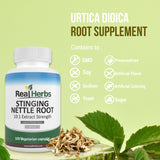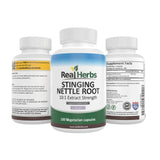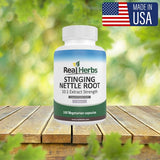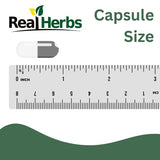Stinging Nettle Root: A Look at its Antioxidant and Nutrient Profile
Stinging Nettle Root: A Look at its Antioxidant and Nutrient Profile
Unlocking the micronutrients and defensive compounds beneath the soil.
More Than Just a Medicinal Herb
The use of stinging nettle (*Urtica dioica*) for health is ancient, but often the focus is placed solely on the therapeutic benefits of its extracts—namely, for prostate health and inflammation [6]. However, the root of this powerhouse plant is also a rich source of antioxidants and essential nutrients that support systemic wellness at a foundational level [2, 3].
This guide dives deep into the antioxidant and nutrient profile of stinging nettle root, explaining the key compounds found beneath the soil and how they contribute to its remarkable therapeutic efficacy and anti-aging properties.

1. The Root's Antioxidant Powerhouse
Antioxidants are vital molecules that protect the body from **oxidative stress**, a process linked to aging and chronic disease. Stinging nettle root is loaded with protective compounds, many of which differ slightly from those found in the leaf [5].
- Polyphenols & Phenolic Acids: The root is rich in phenolic compounds, including lignans and chlorogenic acid [2, 5]. Lignans are particularly important as they are linked to the root's hormonal and prostate-supportive actions [4], while the overall phenolic content provides broad-spectrum antioxidant protection [1, 7].
- Flavonoids: Although the leaf is more renowned for high flavonoid levels (like Quercetin), the root also contains these powerful compounds, which contribute significantly to its anti-inflammatory mechanisms by neutralizing free radicals and inhibiting inflammatory enzymes [1, 7].
- Lipophilic Antioxidants: The root contains lipophilic (fat-soluble) extracts that have been shown to possess potent anti-inflammatory activity, suggesting that the fat-soluble components, likely phytosterols and specific fatty acids, are crucial defense agents [7].
2. Essential Micronutrient Content
The root acts as a biological sink for drawing nutrients from the soil, providing a dense matrix of essential minerals and vitamins. While the leaf is often studied for high Vitamin C and Iron, the root complements this profile with its own unique nutritional density [3].
The root is an excellent source of trace elements and minerals that play a direct role in metabolic and bone health:
- Minerals: Stinging nettle root contains calcium, magnesium, iron, zinc, and potassium [2, 3]. These minerals are essential co-factors for numerous enzymatic processes, nerve function, and red blood cell production, contributing to overall vitality [3].
- Phytosterols: The root is particularly rich in plant sterols, such as beta-sitosterol [4]. These compounds are structurally similar to cholesterol and are famous for their health benefits, playing a key role in the root’s recognized ability to support the prostate [6].
- Fatty Acids: The root contains small but significant amounts of fatty acids that contribute to its beneficial lipophilic profile [5].
3. The Synergy of Nutrients and Bioactives
The true power of nettle root does not lie in isolating a single compound, but in the synergy between its complex nutrient and phytochemical profiles [2, 3]. The minerals support basic cellular function, while the antioxidants protect those cells from damage.
For example, the presence of lignans directly influences hormonal balance, while the presence of antioxidants provides systemic protection against the chronic inflammation associated with various prostate issues and age-related decline [4, 6]. This holistic action is why whole-herb extracts are often preferred in traditional medicine.
4. Practical Application: Sourcing and Consumption
To ensure you capture this nutritional density, the source and form of the nettle root product are critical:
- Extract Quality: Choose standardized root extracts or concentrated extracts (like 10:1 ratios) over simple powdered root, as the former guarantees a higher concentration of the key bioactive compounds like lignans and sterols [6].
- Consumption Method: While the root can be consumed as a decoction (boiled tea), supplements formulated as capsules are the most efficient way to deliver a potent, measured dose of the beneficial lipophilic and hormonal compounds [6].
Nourish Your Body with the Power of Nettle Root
To benefit from the powerful antioxidant and nutrient profile of stinging nettle root, choose a high-quality, concentrated extract.
Our Commitment: Real Herbs Stinging Nettle Root is formulated to deliver the root’s most vital lignans and phytosterols, ensuring you get the comprehensive, cell-defending benefits demonstrated in scientific research.
Support your vitality and cellular defense today, protected by our 100-Day Money-Back Guarantee!
"I take this knowing I'm getting both the hormonal support and the daily dose of antioxidants my cells need. A great all-in-one supplement." - Mark J.
"The difference in quality compared to general nettle powder is night and day. This extract feels potent." - Greg P.
Disclaimer: The information provided in this article is for educational purposes only and is not intended as medical advice. Always consult with a qualified healthcare professional before making any decisions about your health or starting any new supplement regimen.
Scientific Credibility & Citations
- Antioxidant Activity of Urtica dioica: An Important Property … *Acta Medica Mediterranea*. 2023. PMC9774934 (General Antioxidant Properties)
- Nutritional and pharmacological importance of stinging nettle (Urtica dioica L.): A review. *Heliyon*. 2022. PMC9253158 (Review of Nutritional & Pharmacological Importance)
- Stinging Nettle (Urtica dioica L.): Nutritional Composition, Bioactive Compounds and Uses. *Front Nutr*. 2022. PMC9413031 (Nutrient and Bioactive Composition)
- The medicinal chemistry of Urtica dioica L. *Biomed Pharmacother*. 2023. PMC10176313 (Review on Lignans, Sterols, and Chemistry)
- Chemical Constituents of Stinging Nettle (Urtica dioica L.). *Frontiers in Chemistry*. 2024. PMC10970493 (Chemical Constituents Review)
- A comprehensive review on the stinging nettle effect and efficacy. *Phytomedicine*. 2007. PMID: 17509841 (Comprehensive Review)
- Lipophilic stinging nettle extracts possess potent anti-inflammatory. *Phytomedicine*. 2013. PMC3529973 (Lipophilic/Anti-inflammatory Activity)
- Nutrient Composition and Antioxidant Performances of Nettle in Food Applications. *Foods*. 2021. PMID: 33922901 (Nutrient Composition)

